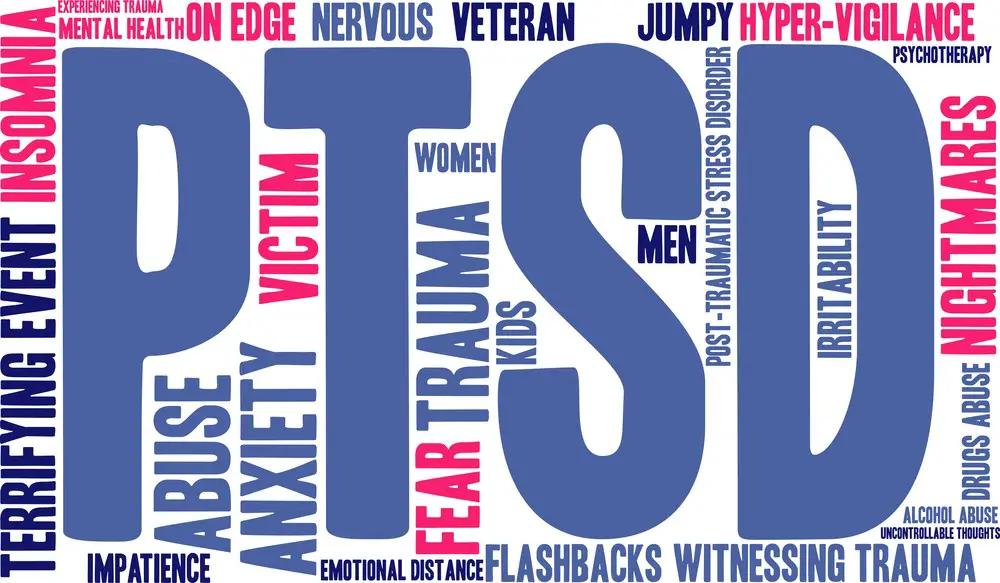As a BetterHelp affiliate, we receive compensation from BetterHelp if you purchase products or services through the links provided
Trauma therapy is an essential process in the path to healing and recovery for those who have experienced distressing and life-altering events. This type of therapy aims to help individuals process, understand, and ultimately cope with their experiences and the associated thoughts and emotions. However, trauma therapy can be a difficult and challenging process for the individual seeking treatment and the mental health professional providing it.
The complexity of trauma often makes it difficult for therapists to determine the best approach to helping their clients. Traumatic experiences can manifest in various ways, such as emotional pain, physical symptoms, or cognitive disruptions, which require different therapeutic interventions. Furthermore, emotions and memories related to trauma can be overwhelming and confusing for clients, making it a challenge to untangle the narrative of their experiences and start to make sense of their feelings.
Key Takeaways
- Trauma therapy can be difficult due to the emotional and cognitive complexities of processing traumatic experiences.
- Challenges in trauma therapy include navigating intense emotions and decoding memories related to the traumatic event.
- Various approaches to trauma therapy provide resilience strategies and techniques to help individuals heal and recover from their experiences.

The Complexity of Trauma
Trauma is an intricate and multifaceted condition that affects individuals on many levels. It often stems from experiencing or witnessing traumatic events such as accidents, violence, sexual abuse, and other distressing incidents. As a result, the complexity of trauma can make therapy difficult for both mental health professionals and trauma survivors.
Trauma therapy is challenging because post-traumatic stress disorder (PTSD) manifests in various symptoms. These can range from emotional and psychological issues like anxiety, depression, and emotional numbness to physical symptoms such as gastrointestinal issues, muscle tension, and insomnia. Moreover, the severity and presentation of these symptoms can differ depending on the individual and the nature of the traumatic event.
Another factor contributing to the difficulty of trauma therapy is the diverse range of traumas people can experience in their lives. For some, trauma might result from a singular event, while others might have endured multiple or repeated traumas in the form of abuse or exposure to violence. This variability can create unique challenges when identifying the root causes and developing effective treatment plans.
Trauma survivors may also use various coping mechanisms to manage their symptoms and navigate life, some of which may be maladaptive or harmful. For instance, survivors might engage in substance abuse, aggressive behavior, or self-isolation as a way to escape their emotions or regain a sense of control. Addressing these coping strategies during trauma therapy requires a delicate approach, as they may be deeply ingrained behaviors that have temporarily relieved the individual.
Furthermore, the interdisciplinary nature of trauma work necessitates a collaborative approach among mental health professionals. Trauma therapy may involve psychologists, psychiatrists, social workers, and other specialists working together to address the complex needs of the individual. The effort to integrate different therapeutic modalities poses its own set of challenges but is essential for comprehensive care.
In summary, the complexity of trauma is rooted in the diverse nature of traumatic events, the wide-ranging symptoms of PTSD, the coping mechanisms employed by survivors, and the interdisciplinary approach required for effective treatment. These factors and each individual’s unique circumstances and needs contribute to trauma therapy’s difficulty.
Emotions and Memories in Trauma Therapy
Trauma therapy can be challenging due to the intense emotions and memories often associated with the traumatic event. These emotions, such as anxiety, depression, and emotional distress, can make it difficult for individuals to confront and process their past experiences.
In trauma therapy, clients are often asked to access their traumatic memories to work through and heal from the emotional pain. This process can be overwhelming, as it involves facing flashbacks, nightmares, and emotionally charged memories. These feelings can be heightened during the therapy sessions, requiring the therapist to provide a safe and supportive environment for the client to explore and process their emotions.
One reason why trauma therapy is difficult is that emotions and memories are closely intertwined. Emotional responses often trigger traumatic memories, making it challenging for individuals to separate the two. In addition, revisiting these memories can cause emotional pain, which may increase anxiety, depression, and emotional distress.
Moreover, traumatic memories may be fragmented or disorganized, making it difficult for clients to make sense of their experiences. Sometimes, individuals may suppress or avoid the memories altogether, further complicating the healing and recovery.
Despite these challenges, trauma therapy can be crucial in addressing and recovering from a traumatic event’s emotional, psychological, and physical impacts. By working through the emotions and memories, individuals can better understand their experiences, gain a sense of control and mastery over their emotional responses, and ultimately, find a path to healing and growth.
Challenges in Processing Trauma
Processing trauma can be incredibly difficult and complex for individuals who have experienced intense emotional pain. One of the main challenges in working through traumatic memories is accessing and confronting the associated emotions. Often, these emotions are deeply buried, and facing them can be both distressing and painful for the individual.
In addition to painful emotions, traumatic memories often consist of negative and painful thoughts, making it difficult for individuals to work through their experiences properly. These distressing thoughts can create significant discomfort and are often avoided or suppressed, making the therapeutic process challenging.
Trauma exposure, whether in vivo or prolonged, is another challenge for individuals with traumatic memories. The idea behind such exposure techniques is to confront and process the traumatic event gradually, ultimately building one’s tolerance and reducing the impact of negative emotions and thoughts. However, facing these traumatic memories can be extremely uncomfortable and sometimes terrifying for the person undergoing therapy.
Working with emotional pain during trauma therapy may also stir up additional negative thoughts that can compound the healing challenge. It is important to recognize and address these thoughts as they arise to make progress on the path to recovery. This process often adds another layer of complexity to trauma therapy, requiring individuals to acknowledge and confront their emotions and memories in a controlled and safe environment.
Despite these challenges, processing trauma is essential in overcoming its consequences and allows individuals to regain control over their lives. Trauma therapy, though difficult, can be a crucial step towards healing and growth, providing the tools necessary to face and move through the pain associated with traumatic memories.

Approaches to Trauma Therapy
Trauma therapy is a specialized form of psychotherapy designed to help individuals heal from traumatic experiences. This type of therapy focuses on providing support and guidance to those who struggle with the aftermath of traumatic events, assisting them in processing these experiences and developing healthy coping mechanisms.
There are several evidence-based approaches that trauma therapists use in their practice. One popular method is Cognitive Behavioral Therapy (CBT). This technique helps individuals recognize and change negative thought patterns that might contribute to their trauma response. By restructuring these thoughts, individuals can develop a more balanced and healthy perspective of the traumatic event.
Another approach is Exposure Therapy, which involves gradually exposing the individual to the traumatic memory or situation in a controlled environment. Exposure therapy aims to help individuals confront and process their fears and anxiety related to the trauma, ultimately reducing the impact these emotions have on their lives.
Cognitive Processing Therapy is another method commonly used in trauma therapy. In this approach, individuals learn to identify, challenge and modify maladaptive beliefs about the trauma that might hinder the healing process. By altering these beliefs, individuals can gain a deeper understanding and acceptance of the traumatic experience.
Eye Movement Desensitization and Reprocessing (EMDR) is a unique form of trauma therapy that has gained increased recognition over the years. EMDR involves having the individual focus on a traumatic memory while simultaneously engaging in bilateral eye movements, auditory or tactile stimulation. The purpose of this treatment is to help alter the individual’s response to the traumatic memory, making it less distressing over time.
Prolonged Exposure (PE) is another form of exposure therapy that is specifically designed for individuals with post-traumatic stress disorder (PTSD). During PE sessions, the individual gradually faces and discusses trauma-related thoughts, feelings, and memories. This allows them to control their emotions more and reduces the frequency or intensity of trauma-related symptoms.
In conclusion, there are various trauma therapy approaches, each with unique methodologies and techniques. A trauma therapist will often tailor treatment plans to match the specific needs of each individual, providing the best possible support for healing from trauma. Choosing the right approach is a crucial step in the healing process, and a skilled trauma therapist can offer guidance and support in finding the method that best suits the individual’s needs.
Strategies and Techniques for Resilience
Trauma therapy can be a challenging journey for survivors. One way to make this process more manageable is by cultivating resilience through various skills and techniques. By doing so, individuals can better cope with their traumatic experiences and work towards healing.
Coping skills are essential for dealing with trauma-related stressors. These may include resources such as support groups, professional counseling, and self-help books. In addition, numerous self-care strategies can help survivors create a sense of safety and regain control over their lives. These strategies include mindfulness practices, relaxation exercises, and grounding techniques.
Trust plays a significant role in resilience, as survivors must believe in their ability to heal and grow. Building trust with oneself and others is vital, as it contributes to a feeling of emotional safety. Maintaining healthy boundaries is also important, as it reinforces self-worth and respect.
Pace is another critical factor in the healing process. Survivors need to recognize that healing is not linear and may take time. Allowing oneself the space to process and accept one’s emotions, memories, and experiences can lead to a more effective and meaningful recovery.
Mindfulness is a powerful tool for increasing psychological resilience. This practice involves paying attention to one’s thoughts and feelings without judgment, which can help train the mind to stay present and focused. Techniques such as deep breathing, meditation, and progressive muscle relaxation are useful for cultivating mindfulness and can help calm the mind and body during distress.
Developing problem-solving and thinking skills is an additional strategy for resilience. By learning how to approach challenges and create solutions, survivors can gain a sense of mastery and control over their lives. These cognitive skills can help modify negative thought patterns and promote healthier perspectives on trauma and recovery.
Lastly, accessing the right tools and resources is essential for building resilience. This may include connecting with professionals or seeking out knowledge from reputable sources. By combining these strategies and techniques, individuals can develop the resilience needed to navigate the complexities of trauma therapy with greater confidence and clarity.

Navigating the Healing Journey
Healing from trauma is a complex and challenging process, often requiring the support and guidance of a trauma-informed therapist. A person’s recovery from post-traumatic stress disorder (PTSD) involves navigating a unique journey through the painful memories, emotions, and sensations of the traumatic event or events.
For those struggling with PTSD, it’s common to experience a range of symptoms, such as flashbacks, nightmares, and changes in behavior. These symptoms often lead to a disruption in daily functioning, making it difficult to maintain emotional well-being. The road to recovery starts with a deeper understanding of the trauma and its impacts.
The individual must confront traumatic memories and associated emotions during the healing process. Guided by a trauma-informed therapist, the person can learn to process these emotions and gain new insights about themselves and their experiences. This may involve exploring physical sensations related to the trauma and identifying triggers that evoke painful memories or flashbacks.
Working through traumatic events can be painful and challenging, but it’s important to remember that healing is gradual. It takes time, patience, and a strong support system to help the person progress in their recovery. Family members, friends, and support persons can be critical in providing love, understanding, and encouragement during this difficult journey.
A key aspect of trauma therapy is providing a safe and supportive environment for individuals to express their emotions and process painful memories. Alongside this, trauma-informed care focuses on developing effective coping strategies for managing the symptoms of PTSD and improving overall well-being.
In conclusion, navigating the healing journey for individuals recovering from trauma is an intricate and demanding task. By understanding the complexities of PTSD and employing trauma-informed care, a person can progress through the healing process and move towards a more balanced and healthy life.
Barriers to Trauma Therapy
Trauma therapy is a challenging process for both clients and therapists. Several barriers can make it difficult for clients to engage in and successfully navigate trauma work, ultimately hindering their progress and healing.
One significant barrier is avoidance. Due to the anxiety and distress associated with their traumatic experiences, many clients avoid confronting their trauma, fearing it will further harm them. This reluctance can hinder active engagement in therapy, making it more difficult for individuals to move forward and heal.
Another barrier is the emotional turmoil that often comes with trauma therapy. Clients may experience heightened anxiety and depression as they work through trauma-related experiences and memories. These emotional states can be challenging to manage and may result in increased isolation as individuals attempt to protect themselves from further emotional distress.
Neglect also represents a potential barrier to effective trauma therapy. Some clients may not have had the necessary support, empathy, or validation from their social network in the past, which can contribute to feelings of isolation and mistrust. Consequently, establishing a trusting and therapeutic relationship with a therapist may prove difficult for these individuals.
Additionally, the intensity of trauma work itself can be a barrier. Delving deep into traumatic memories can be emotionally and physically exhausting, causing clients to become overwhelmed and emotionally drained. This might make it difficult for them to engage with therapy and maintain progress consistently.
In conclusion, trauma therapy presents various challenges, including avoidance, emotional turmoil, neglect, and the intensity of trauma work. Understanding these barriers can help therapists more effectively address these issues and guide clients through their healing journey.
Frequently Asked Questions
How long does trauma therapy typically take?
Trauma therapy duration varies depending on the individual and the severity of the trauma. It can range from a few months to several years. The process often involves multiple stages, including building a trusting relationship with the therapist, confronting and processing the traumatic memories, and learning new coping strategies.
What are common challenges in overcoming childhood trauma?
Overcoming childhood trauma can be challenging due to factors such as suppressed memories, feelings of shame or guilt, and the complexity of the trauma. Additionally, early traumatic experiences can lead to deeply ingrained coping mechanisms that may be difficult to change. This can make the healing process more complex and require specialized therapeutic approaches.
Can PTSD worsen due to therapy?
In some cases, therapy may initially cause an increase in PTSD symptoms as the individual is confronted with traumatic memories. However, this is a normal part of the healing process, and the individual needs to work closely with their therapist to manage these symptoms. Over time, therapy should lead to a decrease in PTSD symptoms and improved functioning.
What are some effective trauma release exercises?
Effective trauma release exercises vary depending on the individual and their specific needs. Some examples include deep breathing exercises, progressive muscle relaxation, grounding techniques, and guided imagery. These exercises aim to help the individual calm their nervous system and gradually release stored traumatic energy.
Why does emotional healing from trauma feel so difficult?
Emotional healing from trauma can feel difficult as it often involves confronting painful emotions and memories that have been avoided or suppressed. As one works through these emotions in therapy, intense feelings may arise, such as anger, fear, and sadness. This can be challenging, but as individuals process these emotions over time, they can experience significant emotional healing.
What are some mistakes to avoid in trauma therapy?
Individuals and therapists must avoid certain mistakes during trauma therapy, including rushing through the process, pushing too hard, or minimizing or ignoring symptoms. Additionally, it is essential to establish a strong and trusting therapeutic relationship and approach the process with patience and adaptability. Finally, it is crucial to prioritize self-care and develop coping strategies to support the individual throughout their healing journey.
- Stress Management: What is the Relationship Between Stress and Addiction? - June 28, 2024
- Exploring Techniques to Maintain a Healthy Lifestyle without Drugs - May 28, 2024
- How Acupuncture Helps Treat Chronic Fatigue Syndrome - May 28, 2024
This site contains affiliate links to products. We will receive a commission for purchases made through these links.




